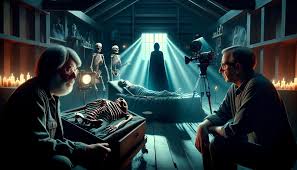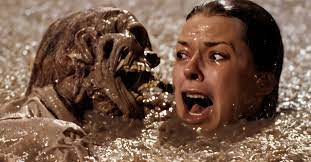Table of Contents
- The introduction to the 1982 movie Poltergeist used real skeletons.
- The controversy surrounding the movie's production
- How the use of real skeletons was discovered: the 1982 movie poltergeist used real skeletons as – tymoff
- The ethical implications of using actual human remains in films.
- Other movies that have used real skeletons and their impact on viewers
- Interviews with cast and crew members about their experience
- The lasting legacy of Poltergeist and its impact on the film industry
- Conclusion: Reflection on the use of real
- FAQs:
The introduction to the 1982 movie Poltergeist used real skeletons.
Having been trapped within the arms of the production of horror films for as long as one can remember, the 1982 movie poltergeist used real skeletons as – tymoff stands out as one of the movies that make one sleep with sections of the closet on one shoulder.
Apart from its nightmare-inducing psychospheric elements and authentic supernatural aspects, few viewers think about the compelling truth.
Viewers are unaware that the film employed the skeletal remains of genuine people.
This has caused uproar among the fanbase and professional critics, raising concerns about movie morality.
Thus, it tells us of nonfiction that with densely packed films of a specific phantom fond of style, it is necessary to devote themselves first.
In resolving this unusual recollection, we offer that words have significantly different interpretations from many.
The controversy surrounding the movie’s production

When “Poltergeist” hit theaters in the 1982 movie Poltergeist used real skeletons as – tymoff – this film was no fad due to its paranormal hocus pokus, which to many was just one more of many films in the supernatural genre, instead, would capture the focus of intense rumors related to the making of the film.
Just after the film was released, the talk of real skeletons being used as props came into circulation.
The concrete facts came to light, angering not only the critics but also the fans. The ethical implications were staggering.
How can a film industry place the quest for realism above the dignity of a man?
The filmmakers explained why they were using actual bones as economic measures and to create some scenes.
However, such a rationale did not do much to chill the public anger. I think there were a few much more decisive, mature alternatives that would be as little morally infringing as possible.
As the movies had fueled dissent, so did they elicit polarization on a question about responsibility, namely,
‘what care must Hollywood exercise towards the memory of mortal remains? Was the filmmaker’s integrity sacrificed for the needs of show business?
The sensationalism of the idea left its negative influence on the future production and choice of similar ideas, forever changing how, within the film community, such ideas would be viewed henceforth.
How the use of real skeletons was discovered: the 1982 movie poltergeist used real skeletons as – tymoff

The news of the 1982 movie Poltergeist used real skeletons – tymoff’s film Poltergeist was made around a strange true story of this out-of-the-ordinary photographer, tymoff’s movies aren’t real, and neither were the bones.
Movies. What happened was shocking both for the fans and the critics. It has been the subject of prolonged speculation, but the specifics were blurry for decades.
During the shooting, various crew members also observed that some props looked more realistic than usual in the movie.
The harrowing epiphany came much later when the behind-the-scenes garbs released after the film’s screening were so dreadful.
the 1982 movie Poltergeist used real skeletons as – tymoff makers and the performers noted that they presumed these were mere prop vomit props for the movie but were aghast that they were the actual bones.
But if anyone paid attention to those whispered secrets that there were shortages of money or structural difficulties so that human remains had to be used, then it was true.
This curious detail caused a storm of incidents among fans of the horror genre and even social debates in Hollywood’s artistic community.
After more information about making this monumental film was revealed, dozens of interviews addressed controversies of consent and preservation regarding human remains.
The ethical implications of using actual human remains in films.
the 1982 movie Poltergeist used real skeletons – tymoff use of actual human remains in cinema elicits a strong moral dilemma.
Filmmakers note that weathered aesthetics make a particular scene more appealing and digestible to the audience. However, this often undermines the dignity of the dead.
The contemporary audience is even more careful of the reasoning behind some of such decisions.
It is common for the audience to feel uncomfortable without completing the information, which can ruin the artistic purpose of the film.
When people find out that there are real skeletons in such frames, the way the story absorbs them may be affected.
Equally important is the issue of consent. Where did these remains come from? Did the families get the chance to participate or even know about this? In turn, such issues shape how society views and accepts the objectives of such projects.
Undoubtedly, ‘these waters’ are fraught with dangers for the filmmakers. It is not easy to find a way out of such impossible situations.
However, it is essential to maintain the public’s trust through such works.
Other movies that have used real skeletons and their impact on viewers
the 1982 movie Poltergeist used real skeletons as – tymoff development of cinema art demands the use of film tools that sometimes compromise artistic and moral standards.
The use of real bones belongs to this range of tools. Understood, there were other creative means. However, using a dead body is an invention that is used to beautify a movie.
There is no better place to start than with actual horror movies that endorse such a notion. Such horrific usage was partly employed in the ‘Poltergeist’ films growing up.
You’d read gruesome horror storylines in novels.
As an illustration, there is no better brand for all directors in the world than William Lustig:
Queitai does anything for the sake of grandeur, even for an instant. Trailers consider themselves chasteners who promise the worst of scares ever imagined.
The climax of Richard and Judy is not neglected as well.
One can also rest assured that three is going to be an incalculable waste of darling property that growing and expanding can’t be avoided.
Take, for instance, Goya’s work. Screenplay authors such as Banker suppose everyone knows how movies marked with ‘18’ are unrestrained.
Finally, let us rewrite this framing by positing these contemplations and defamiliarization.
Cinematic film, including acting, realizar violencia den gateways, notably in ecoterrorism, where cultural taboos do not apply.
Would you want to see pictures of such instigating conflict?
Interviews with cast and crew members about their experience
Cast and crew members of Poltergeist have recounted disturbing and spooky experiences that remained even after the film’s death.
Some were shocked to find out the actors were surrounded by real skeletons, which was unnerving in a good way.
Zelda Rubinstein, known for playing Tangina Barrons, recounted how she felt shocked when she learned.
“It was making my head chill, ” she stated. But it also made us perform such scenes more seriously.”
For JoBeth Williams, who plays Diane Freeling’s frightened mother, that was ambivalence.
She recalled the very strange experience of performing that scene where dead bodies were around but further added that it was very helpful to bring the nightmares to the film.
Cinematographer Matthew F. Leonetti remarked on the tension of those moments regarding his responsibility instead of having pleasure himself living those moments on the fake feature.
He pointed out that there was an unusual strain in the air during the shooting, which was beneficial for all under those stressful conditions.
Such episodes have characteristic features that reverberate about time, not just for them but even for the audiences of such pieces all over the globe.
the 1982 movie Poltergeist used real skeletons as – tymoff tales continue to make the fans bow with both interest and controversy regarding the ethics of filmmaking.
The lasting legacy of Poltergeist and its impact on the film industry
“Poltergeist” is one of those films that is very significant in the evolution of horror cinema.
It interweaves scary phenomena with the situations of a typical American family, which fascinates the audience and lifts the standards of the genre.
For example, viewers’ sense of suspension of disbelief, coupled with their fascination with cinematic images, enhanced their expectations of film content.
Progress was made, and a new generation of creative attempts among filmmakers to distort or incorporate the techniques of blurring and censorship in image production has emerged.
These understandings of separation, loss, and family are such that the audience associated with them inexorably transformed quite a few films shot in the following decade.
In the latter context, the contamination of ‘safe’ spaces by evil is an enduring theme in films of the horror genre.
Further, ‘Poltergeist’ also initiated the discussion on moral responsibilities in filmmaking practice.
the 1982 movie Poltergeist used real skeletons as – tymoff debate about the depiction of exposing natural bodies in the context of animation and limitations of courtesy arising from culture is topical even now.
Although the years go by, a certain period is missing; the idea and the interests behind the film flow through reimaginings and ideas of other works.
It did not only influence the genre of horror but also the genre of simple storytelling through its effective mixture of the ordinary and the terrifying.
Conclusion: Reflection on the use of real
The unveiling of the Poltergeist’s use of real skeletons will shock many, but once said, it will only negatively intensify the debates on cinematography.
This incredible fact reshapes our understanding of horror film fiction and opens up other critical debates about restoring human remains.
Typically, when we are spectators, we are engaged in a make-believe universe and forget about whatever happens backstage.
Sourcing real skeletons was not merely a financial decision but also indicative of the extreme lengths the movie industry goes to recycle creativity.
Some hold that this technique is very effective, as it creates the film’s atmosphere of sinister and unnerving.
Others, however, concern themselves with the ethics surrounding such measures, especially with dummies and the dead.
Contemplating this side makes us wonder how far we are ready to be entertained.
It raises the issue of whether the limits on morality in film-making should exist.
It even challenges young filmmakers to be more conscious and considerate about the narrative structure they take.
Poltergeist’s legacy does not stop at being a classic horror flick. It also embodies the position and obligations of an artist.
If the viewers progress, so should our principles captured inside the creative industries. Respect should always be upheld, even amid exciting stories.
FAQs:
What was the public reaction when they learned that the 1982 movie Poltergeist used real skeletons as – Tymoff?
The reaction was one of outrage and ethical concern.
What ethical implications arose when the 1982 movie Poltergeist used real skeletons as – Tymoff?
It raised questions about consent and respect for human remains.
How did the decision that the 1982 movie Poltergeist used real skeletons as – Tymoff impact the horror genre?
It prompted a reevaluation of ethics in horror filmmaking.
What legacy did the fact that the 1982 movie Poltergeist used real skeletons as – Tymoff leave in the film industry?
It sparked ongoing discussions about moral responsibilities in filmmaking.
Why did filmmakers ensure that the 1982 movie Poltergeist used real skeletons as – Tymoff?
Budget constraints and a desire for realism influenced their decision.



